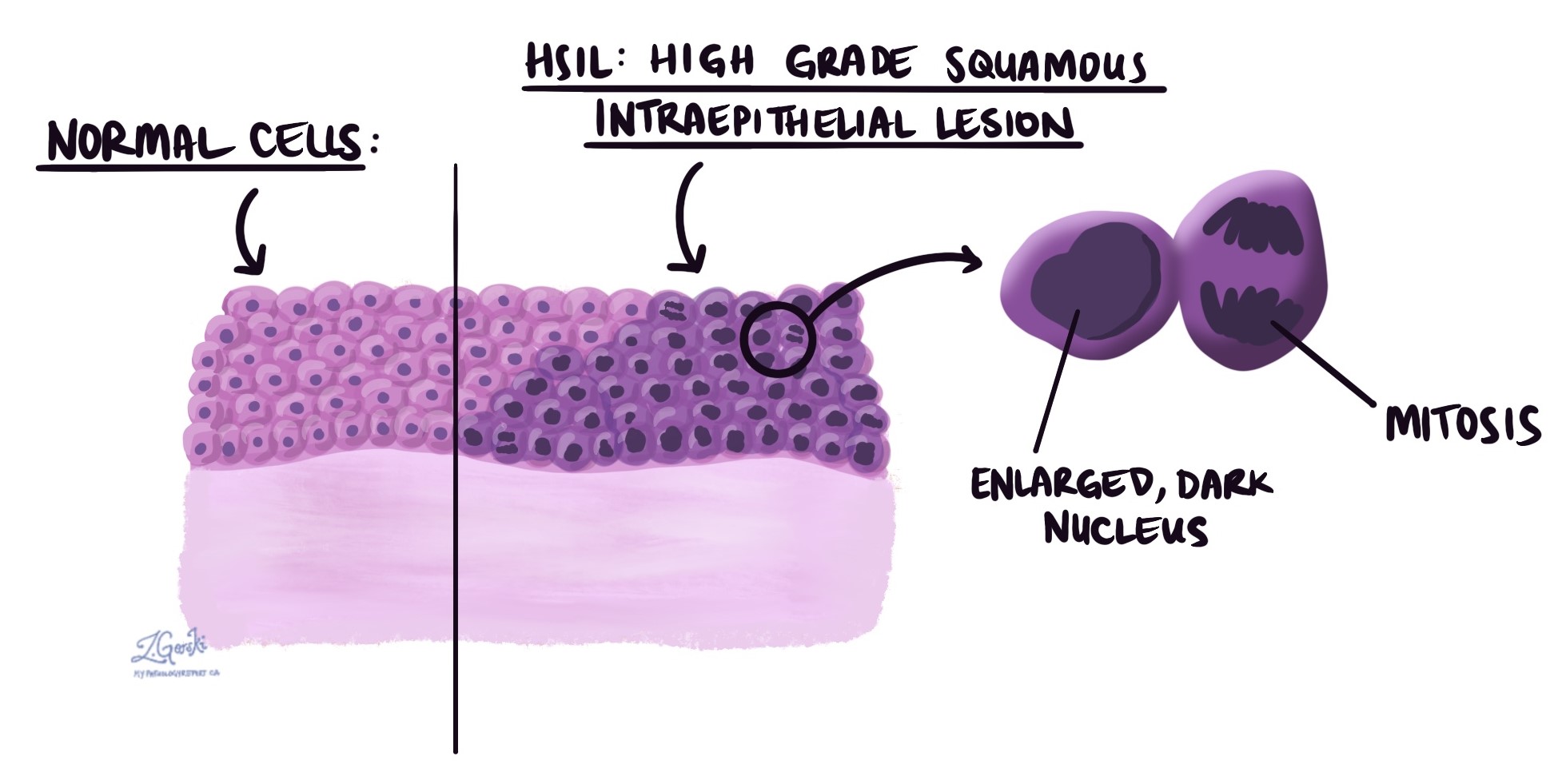by Emily Goebel, MD FRCPC
December 13, 2023
High grade squamous intraepithelial lesion (HSIL) is a precancerous disease caused by human papillomavirus (HPV). It is composed of abnormal squamous cells that have been infected and transformed by the virus. Squamous cells are found in a thin layer of tissue called the epithelium which covers the inside surface of the vagina. There are many types of HPV but most cases of HSIL are caused by the high-risk types 6, 11, 16, 18, and 51. Another name for HSIL of the vagina is vaginal intraepithelial neoplasia (VaIN).
HSIL is not cancer although patients with HSIL are at increased risk for developing a type of vaginal cancer called squamous cell carcinoma. For this reason, most patients with HSIL are offered treatment to remove the area of abnormal tissue. Low-grade squamous intraepithelial lesion (LSIL) is a related condition that is also caused by HPV. However, compared to HSIL, the risk of developing cancer from LSIL is much lower.
How is this diagnosis made?
The diagnosis of HSIL starts with the microscopic examination of cells or tissue from the vagina. The cells or tissue can come from a Pap test, biopsy, or excision.
What does high grade squamous intraepithelial lesion look like under the microscope?
Under microscope examination, the abnormal squamous cells are confined to the epithelium on the surface of the tissue. The abnormal squamous cells are typically larger and darker than the surrounding normal squamous cells. Cells undergoing a process called mitosis (dividing to create new cells) are also usually seen. Pathologists often confirm the diagnosis by performing a test called immunohistochemistry (IHC) for a protein called p16. The abnormal cells in HSIL will be positive for p16 whereas other conditions that can look like HSIL will be negative.

What is a margin?
A margin is any tissue that has to be cut by the surgeon to remove the lesion from your body. A negative margin means that no HSIL cells were seen at the cut edge of the tissue. In contrast, a positive margin means that HSIL cells were seen at the cut edge of the tissue. A positive margin increases the risk that HSIL will recur (grow back) in that location over time. Margins will only be described in your report if a biopsy or excision was performed to remove the entire lesion.

About this article
This article was written by doctors to help you read and understand your pathology report. Contact us if you have questions about this article or your pathology report. For a complete introduction to your pathology report, read this article.


